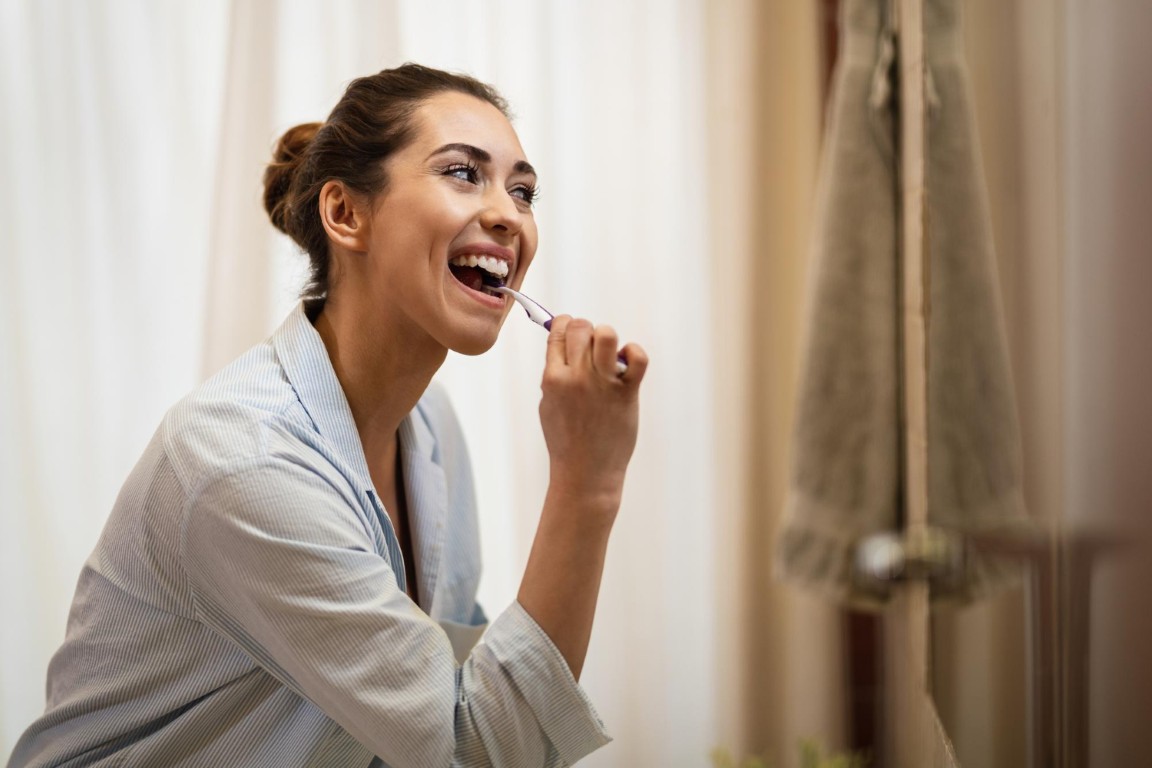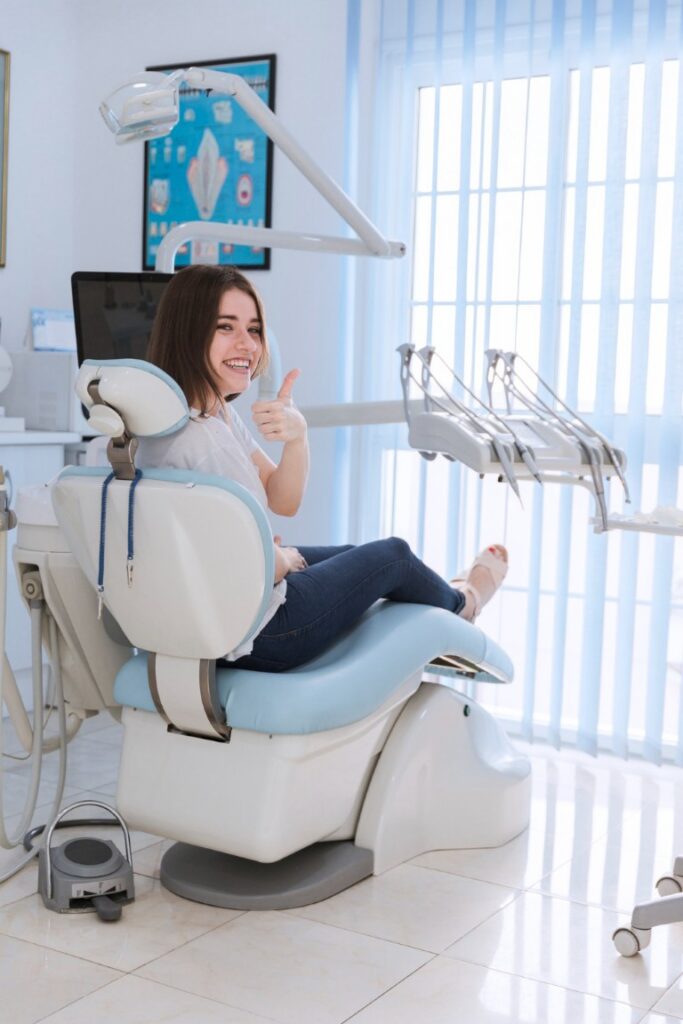Why Proper Tooth Brushing Matters
Oral Health and Overall Wellness Connection
Your mouth is the gateway to your body. Poor oral hygiene can lead to gum disease, tooth decay, and bad breath, but it can also contribute to systemic conditions like heart disease, diabetes, and even respiratory infections.
Common Consequences of Poor Brushing
- Plaque and tartar build-up
- Gingivitis and periodontitis
- Cavities
- Tooth discoloration
- Chronic bad breath (halitosis)
ADA Guidelines for Tooth Brushing
Frequency
Brush at least twice daily—once in the morning and once before bed.
Duration
Each session should last two full minutes.
Toothbrush Positioning
Hold your toothbrush at a 45-degree angle to the gum line and use gentle, circular motions.
Choosing the Right Toothbrush
Manual vs. Electric
Both types are effective if used correctly. However, electric toothbrushes can remove more plaque and are often easier for those with limited mobility.
Soft, Medium, or Hard Bristles
Always opt for soft-bristled brushes, as harder bristles can erode enamel and damage gum tissue.
How to Select the Best Toothpaste
Fluoride Benefits
Fluoride helps strengthen enamel and prevent cavities. Choose toothpaste that’s ADA-approved and contains fluoride.
Tartar Control and Whitening Agents
Some pastes offer additional features like tartar control, whitening, or sensitivity relief. Choose according to your specific dental needs.
Step-by-Step: How to Brush Your Teeth
Preparation
Wet your toothbrush and apply a pea-sized amount of toothpaste. Set a timer for two minutes.
Technique Breakdown
- Start with the outer surfaces of your upper and lower teeth.
- Move to the inner surfaces using gentle, circular motions.
- Brush the chewing surfaces with short back-and-forth strokes.
- Tilt the brush vertically and clean the inside of the front teeth.
- Finish by brushing your tongue.
Common Mistakes
- Brushing too aggressively
- Missing the inner surfaces
- Brushing for less than two minutes
- Using old or frayed toothbrushes
Don’t Forget the Tongue
Why Tongue Cleaning is Essential
Your tongue harbors bacteria that contribute to bad breath and plaque formation. Brushing or scraping it daily keeps your breath fresher and your mouth cleaner.
Best Tools for the Job
You can use your toothbrush or a specialized tongue scraper. Always clean from back to front.
Brushing for Different Age Groups
Children
Use a child-sized brush with a small head and soft bristles. Supervise brushing until they develop proper technique.
Teens
Focus on areas around braces or dental appliances. Emphasize the importance of consistency.
Adults
Stick with a routine and schedule regular dental checkups. Electric toothbrushes are often ideal.
Seniors
Consider brushes with larger handles or electric options to compensate for mobility issues.
How to Brush with Braces or Dental Work
Special Considerations
Brackets and wires trap food easily, so brush thoroughly around all components.
Recommended Tools
- Interdental brushes
- Water flossers
- Electric toothbrushes with orthodontic heads
The Role of Flossing and Mouthwash
Brushing alone isn’t enough. Add:
- Flossing once a day to remove debris between teeth
- Mouthwash to kill bacteria and strengthen enamel
How Long Should You Brush Your Teeth?
Stick to the two-minute rule. To help, use:
- A stopwatch or timer
- Electric toothbrushes with built-in timers
- Brushing apps or music playlists
When to Replace Your Toothbrush
Replace every 3–4 months, or sooner if bristles become frayed. A worn toothbrush is less effective at cleaning.
Brushing Before or After Meals?
Wait 30 minutes after eating—especially acidic foods—to avoid brushing softened enamel. Brushing before breakfast is a safer bet.
Common Brushing Mistakes to Avoid
- Brushing too hard can wear down enamel and damage gums.
- Neglecting the gum line allows plaque to accumulate.
- Rinsing immediately after brushing can wash away fluoride. Wait a few minutes.
Tips for Kids: Making Brushing Fun
- Use toothbrushing songs or apps
- Introduce reward systems or sticker charts
- Let them choose their own toothbrush and toothpaste
Nighttime vs. Morning Brushing
Benefits of Each
Morning brushing removes bacteria built up overnight. Nighttime brushing clears away food particles and prevents decay.
Which Should You Never Skip?
Night brushing is non-negotiable—it protects your teeth during the most vulnerable time: sleep.
Signs You Need to Adjust Your Technique
- Bleeding gums
- Persistent plaque or tartar
- Gum recession
- Tooth sensitivity
Professional Help: Dentist’s Role in Brushing
Dentists evaluate your brushing effectiveness during checkups. They can:
- Spot early signs of disease or decay
- Recommend technique adjustments
- Suggest better tools or products
Conclusion: Brushing Towards Better Health
Mastering how to brush your teeth is a simple yet powerful way to take control of your oral and overall health. By following these expert-backed tips and incorporating a few extra habits, you’ll enjoy a cleaner, brighter, and healthier smile for years to come.
FAQs: How to Brush Your Teeth
- Should I rinse after brushing?
- No, it's better to spit out excess toothpaste and avoid rinsing to let the fluoride work longer.
- Can I brush more than twice a day?
- Yes, especially after sugary or sticky meals. Just be gentle and avoid overbrushing.
- What’s the best toothbrush for sensitive teeth?
- A soft-bristled brush labeled for sensitivity, ideally with a small head.
- Should I use mouthwash before or after brushing?
- Use mouthwash after brushing and flossing for the most benefit.
- How do I clean my toothbrush?
- Rinse thoroughly after each use and store upright to air-dry. Don’t cover it.
- Is electric better than manual?
- Electric brushes often remove more plaque and are easier to use, but both can be effective.
External Resource
For more in-depth guidance, visit the American Dental Association’s Brushing Recommendations.


